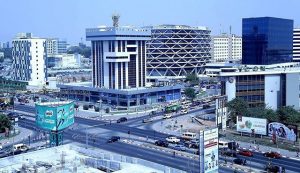
Have you ever wondered how the names for suburbs, towns, cities and countries were coined?
Well, in this article, we furnish you with the origin of the names of some suburbs of Ghana’s capital city, Accra.
Check them out below;
KANESHIE: In 1928, Accra saw rapid expansion, on the farther west, the place where people engage in night market developed into Kaneshie. Kaneshie in Ga language means “under the lamp.” It is in reference to its beginnings as a night market and how it grew into a sizable settlement.
KINBU: It means Government Well. It developed in the early years of 21st century and was still being built on in the 1930s. It was never as solidly Ga as the original Accra.
NIMA: It is argued that Nima, Kanda, and Maamobi existed as villages of Fulani and Hausa ranchers and began to take their present sprawling forms in the late 1940s and 1950s, when many former Hausa soldiers in the Gold Coast Constabulary settled around the capital. Nima land originally belonged to Osu and Labadi, not Accra, and was first acquired for cattle rearing in the 1920s. The identity of the original lessee is disputed, but according to the Fulani chief of Nima, the name Nima is derived from a Fulfulde (Fulani) word “Neyema” which means “Fertile Land.” Ione Acquah in her 1954 Survey of Accra posited that Nima was incorporated into the city of Accra in 1953. The creation of the Ring Road dual carriageway in the 1950s permanently separated the mixed but mainly southern settlement areas like Asylum Down (built up in the 1950s, below the ridge occupied by the Accra Psychiatric Hospital and later also the Roman Catholic cathedral) from the rapidly growing suburbs of mainly northern migrants to the north of it.
ADABRAKA: This is corruption of Hausa word (also from Arabic), “albarka” which means “Blessing.” Adabraka was first settled by Hausa and other northerners who kept beef cattle.It was developed by the colonial government, in the wake of the bubonic plague in 1907 as a residential suburb in a strip between the N saw am road (Liberty Avenue) and Boundary Road (now Kojo Thompson Road) and from Castle Road north to Farrar Avenue.
KPEHE: This settlements along the road to Nsawam means “Meeting Place.”
KORLE-BU: It means Korle`s Well. Korle is a name of a Ga deity.
KORLEGONNO: It means Korle`s Hill.
ALAJO (Alaajo): This suburb also means “They sing and dance.” Christaller (1889) explained that the settlement began as the abode of former (non-Ga) slaves; they were engulfed in Accra New Town, which is very mixed both ethnically and economically.
SABON ZONGO: It means “New Camp.” Acquah (1954) explained that Sabon Zongo was developed for the Hausa and associated community in about 1933 to relieve the congestion in Central Accra and Tudu.
Reference:
Dakubu, Mary Esther Kropp. Korle meets the sea: A sociolinguistic history of Accra. Oxford University Press on Demand, 1997.

